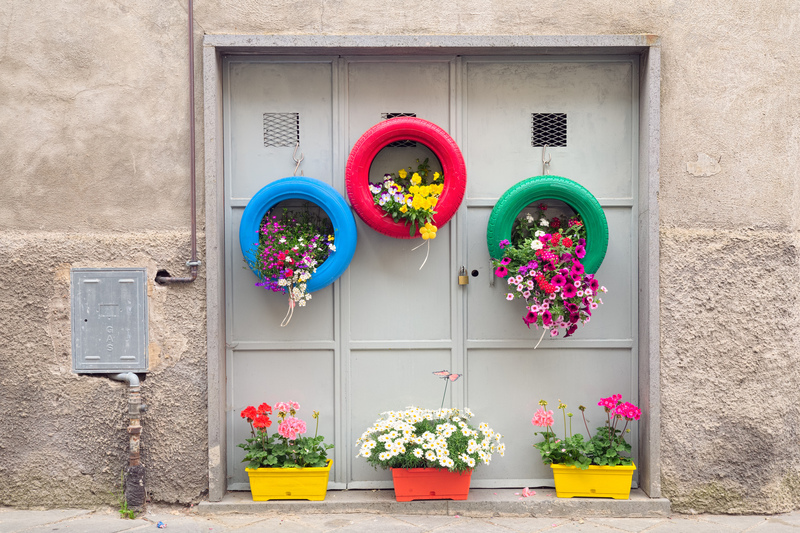A Journey to Simplicity: Mastering Decluttering and Minimalist Living
Modern life has become increasingly packed with possessions, digital distractions, and endless obligations. Many people are searching for ways to reclaim peace and meaning by embracing a minimalist mindset. Decluttering isn't just about cleaning up your physical space--it's also about simplifying your mind, finances, and lifestyle. In this comprehensive guide, we will explore how you can set out on your own journey to simplicity and master minimalist living effectively.
Understanding Minimalist Living: More Than Just Less Stuff
Minimalism is often misunderstood as simply having fewer things. In reality, minimalist living is about focusing on what truly matters. It's a conscious choice to prioritize quality over quantity in all areas of your life. This approach encourages mindful consumption, deeper relationships, and purposeful living.
- Intentionality: Choosing possessions and commitments that add value to your life.
- Freedom: Experiencing liberation from materialism and clutter.
- Clarity: Achieving mental clarity through physical and emotional decluttering.
By adopting a simple living philosophy, you can foster greater happiness, create a more inviting home, and reduce stress.
Minimalism vs Decluttering: Recognizing the Difference
While minimalism and decluttering go hand-in-hand, there are important differences:
- Decluttering is the act of removing unnecessary items from your home or life.
- Minimalist living is a lifestyle choice centered on simplicity, mindfulness, and intention.
Decluttering can be a first step toward minimalism, but minimalism goes beyond physical possessions. It's about eliminating all forms of excess--emotional, digital, and even social--to create space for what truly matters.

Why Simplicity? The Transformative Benefits of a Minimalist Lifestyle
Choosing simplicity and minimalism can transform every aspect of your existence. Here are some compelling benefits:
- Less Stress: Fewer items mean fewer things to clean, organize, and worry about.
- Increased Productivity: A clutter-free environment helps you focus and increases efficiency.
- Financial Freedom: Reduced consumption leads to significant savings and less debt.
- Environmental Impact: Minimalism supports sustainability through mindful resource use.
- Emotional Well-being: Letting go of what doesn't serve you uplifts your mood and energy.
- More Time: Less time managing stuff means more time for meaningful activities and relationships.
With minimalist living, each area of life can be enriched with newfound clarity and authenticity.
How to Start Your Journey to Simplicity
Mastering decluttering and minimalist living may appear overwhelming at first, but with a thoughtful approach, it becomes rewarding and even enjoyable. Here are actionable steps to ignite your transformation:
1. Define Your Why
Start by asking yourself: Why do I want to simplify? Clearly defining your motivation ensures your journey is intentional. Are you seeking peace, more time, or financial stability? Your "why" will guide tough decisions ahead.
2. Set Realistic Goals
Don't aim to become a hardcore minimalist overnight. Set small, achievable goals--it could be decluttering a single drawer or spending one week without non-essential shopping. Small wins create momentum for bigger changes.
3. Decluttering the Physical Space
The classic starting point is your physical environment. Follow these practical tips for effective decluttering:
- Start Small: Tackle one category or room at a time (such as wardrobes, books, or kitchenware).
- The Four-Box Method: Use boxes labeled Keep, Donate, Recycle, or Discard as you sort belongings.
- Ask Key Questions: Have I used this in the last year? Does it serve a purpose? Does it spark joy?
- Practice Gratitude: Thank items for their service before letting go, following principles from methods like the KonMari approach.
Pro Tip: Set a timer for 15-20 minutes to make decluttering less daunting and more focused.
4. Digital Decluttering: Simplify Your Virtual Life
Clutter isn't just physical. Digital chaos--from overflowing inboxes to unused apps--can be just as stressful. Here's how to streamline your digital world:
- Clean Your Desktop: Organize files and delete unneeded documents.
- Unsubscribe: Remove yourself from newsletters and notifications that clutter your inbox.
- Limit Social Media: Unfollow or mute accounts that no longer align with your values.
- Automate Where Possible: Use tools to automate repetitive digital tasks and backups.
5. Minimalism in Relationships
Minimalism also extends to nurturing deeper, more meaningful connections. Consider:
- Quality Over Quantity: Invest time in relationships that enrich and support you.
- Healthy Boundaries: Politely decline invitations and obligations that drain your energy.
- Authenticity: Practice honest communication and authenticity in your friendships and family ties.
6. Financial Decluttering: Streamlining Your Money Habits
Minimalism and budgeting go hand-in-hand. Eliminate unnecessary expenses and focus on intentional spending:
- Track Spending: Use budgeting tools to identify areas of excess.
- Embrace Quality: Choose well-made, durable items over cheap or trendy goods.
- Simple Investments: Automate savings and streamline investments to match minimalism principles.
Decluttering Techniques and Minimalist Living Tips
Below are proven techniques and expert-approved tips for mastering decluttering and adopting minimalist living:
The 90/90 Rule
If you haven't used an item in the last 90 days and don't foresee needing it in the next 90, it's time to let it go.
One In, One Out Principle
For every new item brought into your space, commit to removing another. This helps maintain balance and prevents accumulation.
Capsule Wardrobe
Curate a collection of essential clothing items that mix and match effortlessly, focusing on versatility, comfort, and personal style.
Minimalist Challenges
- 30-Day Minimalism Challenge: Remove one item a day for 30 days.
- Minimalist Packing: Try traveling with just a carry-on bag to discover what you truly need.
Prioritize Experiences Over Things
Minimalist living shifts your focus from possessions to meaningful experiences and relationships. Invest in travel, learning, and connection rather than accumulating material goods.
Overcoming Obstacles on the Simplicity Journey
Even with the best intentions, barriers can arise. Here's how to address common challenges:
- Emotional Attachment: It's tough to let go of sentimental items. Remind yourself that memories live within you, not your possessions. Photograph keepsakes before donating or discarding them.
- Family and Roommate Resistance: Encourage open dialogue and lead by example. Focus on decluttering your personal spaces first before expecting others to join in.
- Fear of Missing Out (FOMO): Minimalism means saying no to certain trends, but trust that what remains will be more fulfilling.
- Guilt: Let go of guilt associated with gifts or unused purchases. Opt to donate, recycle, or repurpose them to give them new life.
Minimalism for Families: Tips for a Simple Home Life
Embracing simplified living with family can be uniquely rewarding. Involve everyone by:
- Making it a Game: See who can declutter the most items or organize a space the fastest.
- Teaching Gratitude: Encourage children to appreciate what they have and regularly donate unused toys or clothes.
- Setting Collective Goals: Work together to create shared spaces that foster calm and creativity rather than chaos.
Minimalist Living with Kids: What Works
Model mindful consumption and keep toys and clothes organized in clearly labeled bins. Rotate items seasonally to prevent overwhelm and encourage imagination.
The Psychological Impact of Minimalist Living
Decluttering and simplifying can have powerful effects on your mental and emotional health:
- Reduces Anxiety: A tidy, organized space soothes the mind and decreases stress hormones.
- Boosts Creativity: Less clutter means fewer distractions, allowing creative ideas to flourish.
- Enhances Self-Esteem: Successfully maintaining a minimalist lifestyle boosts confidence and agency.
- Encourages Mindfulness: Living with less encourages you to savor and give attention to each item, activity, or relationship.
Minimalist Design: Creating a Calm Sanctuary
Let your home reflect your commitment to simple living:
- Neutral Colors: Opt for whites, earth tones, and soft shades to create a tranquil atmosphere.
- Functional Furniture: Choose pieces that are both beautiful and serve multiple purposes.
- Open Spaces: Allow for breathing room by arranging furniture to maximize openness and flow.
- Natural Light: Keep windows uncluttered to let in light and connect with the outdoors.
Minimalist design isn't about starkness--it's about highlighting intentional spaces that make you feel relaxed, focused, and at home.

Maintaining Minimalism: Steps to Sustain Simplicity Long-Term
- Regular Reviews: Set a monthly or seasonal date to reassess and eliminate new clutter.
- Habit-Building: Replace shopping or accumulating with new hobbies or experiences.
- Conscious Consumption: Before acquiring something new, pause and ask: Does this add genuine value?
- Join Minimalist Communities: Online forums and local groups can provide accountability and inspiration.
Your Next Steps: Embrace A Journey to Simplicity Today
Minimalist living and decluttering offer a path toward greater purpose, presence, and freedom. There is no perfect or one-size-fits-all way. The most important step is to begin--no matter how small. Celebrate every bit of space reclaimed and every moment of peace found along your journey to simplicity.
Ready to master minimalist living? Start today by picking one area of your life to simplify. Share your progress, inspire others, and enjoy the profound rewards of a decluttered, intentional, and meaningful existence.
If you've discovered the magic of simplicity, share your tips or stories below. Every journey starts with a single step, and your transformation may inspire someone else. Your minimalist journey awaits!